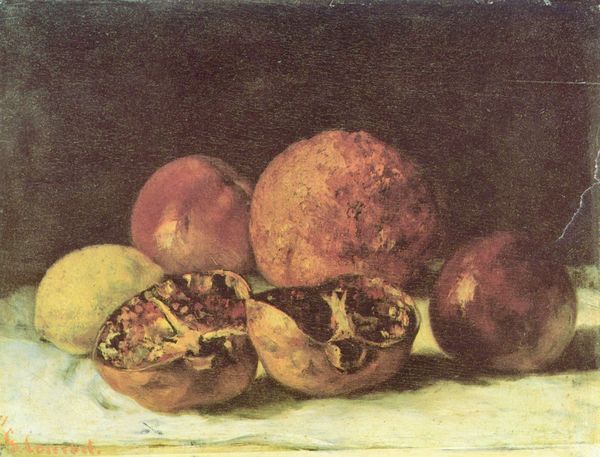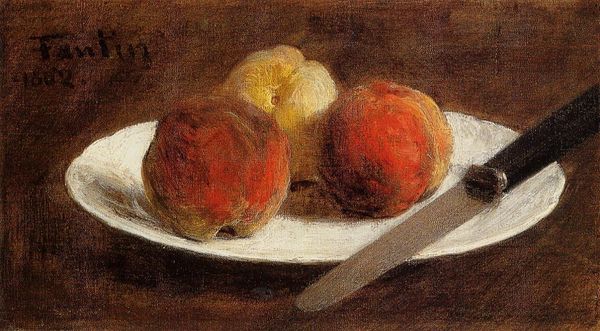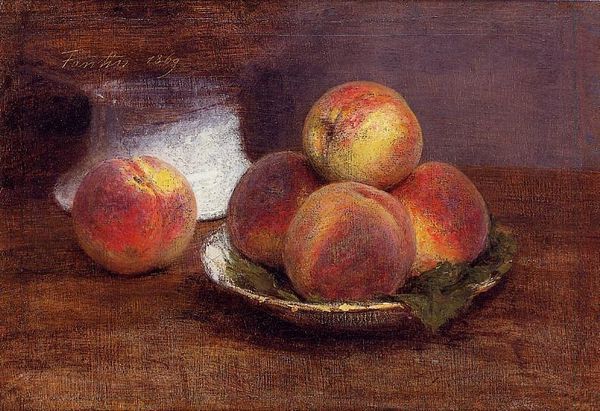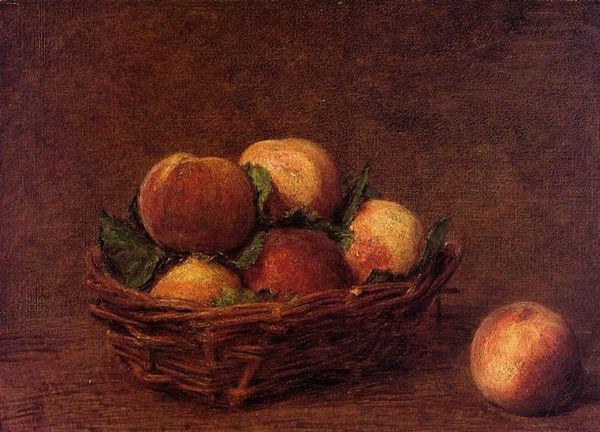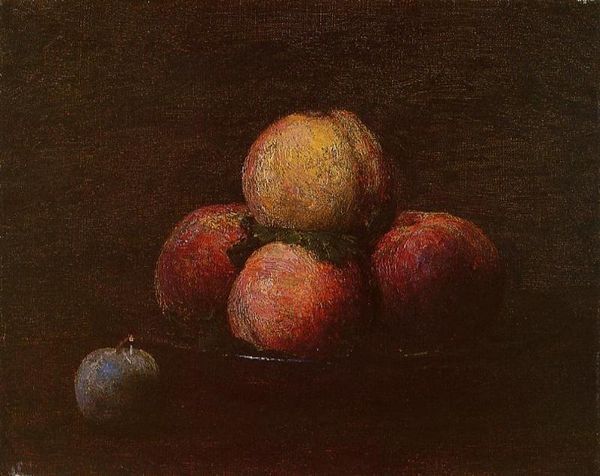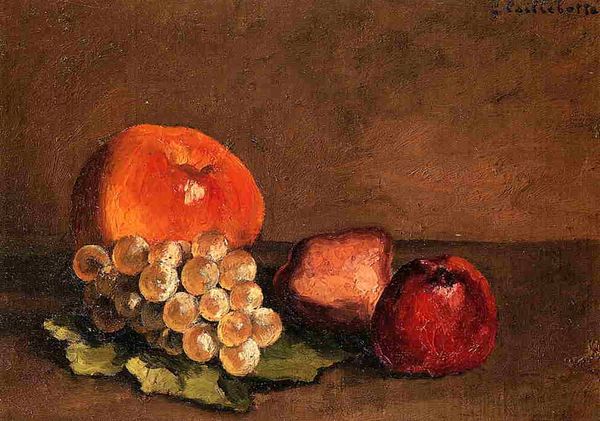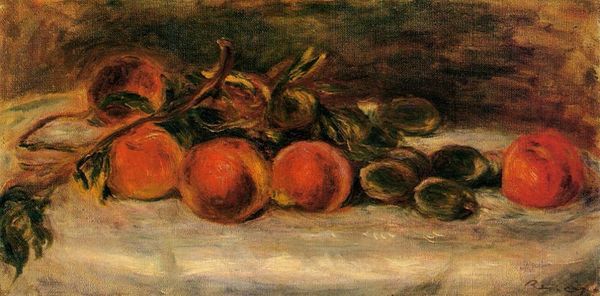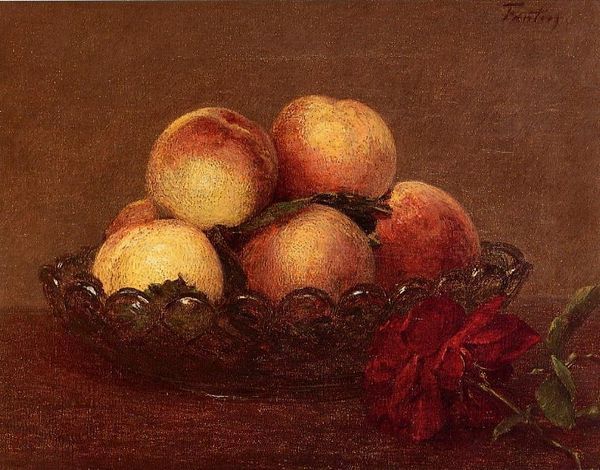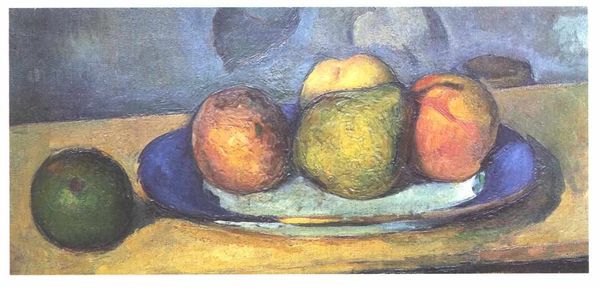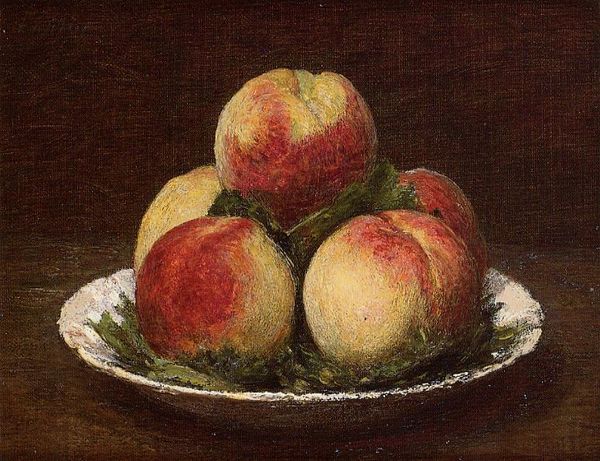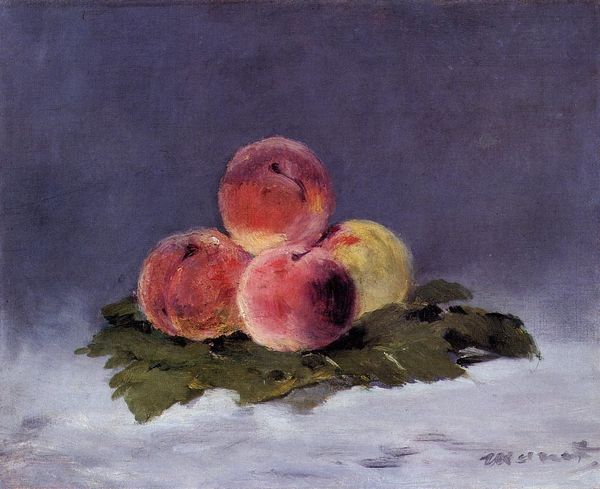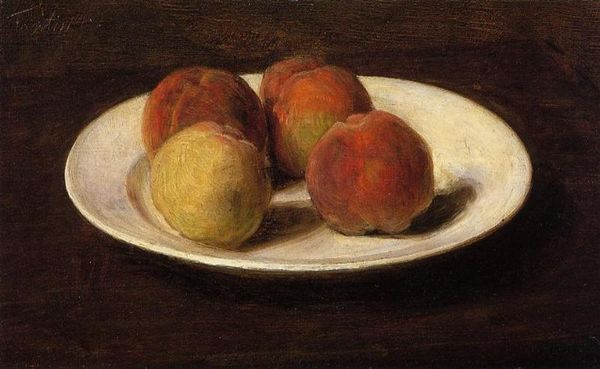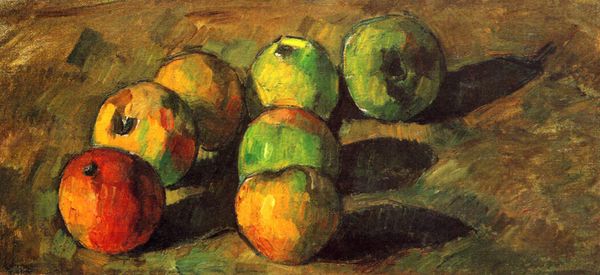
Dimensions: 17 x 27 cm
Copyright: Public domain
Editor: Gustave Caillebotte's "Peaches, Nectarines and Apricots," painted in 1878 using oil, presents a seemingly simple arrangement of fruit. I’m struck by its muted tones, especially the tension between the darkness in the background and the colors of the fruit itself. What narratives or dialogues do you think Caillebotte is creating here? Curator: I'm drawn to this painting's complex relationship to labor, class, and consumption. While seemingly just a still life, the presence of this ripe, abundant fruit implicitly references agricultural labor – labor often performed by marginalized populations whose stories were rarely given space. Think about who had access to this kind of fruit in 19th-century Paris. Editor: That makes me reconsider my initial reaction. Were still lifes like this potentially a statement of access, or even privilege? Curator: Precisely. Moreover, the way Caillebotte uses photographic techniques and skewed perspectives in other works—could that relate here? Maybe this work subtly hints at new money versus established societal expectations? Who gets to possess such beauty, such symbolic "fruit"? It moves us beyond merely admiring pretty fruit. It asks who *eats*. Editor: So it becomes a social commentary almost hidden in plain sight, using everyday objects to speak volumes. The dark background also heightens that disparity – casting the fruit in an almost unattainable light. Curator: Absolutely! Caillebotte's choice of what and how to depict holds profound historical, economic, and societal implications when considering the contemporary context. Food connects people; therefore, this quiet still-life becomes a radical assertion on social inequalities during post-impressionism. Editor: This piece definitely makes me think about still-life in a different way, connecting aesthetics and activism more directly. Curator: Indeed, and in turn, it offers an insightful peek into the late 19th-century dynamics that still echo loudly today.
Comments
No comments
Be the first to comment and join the conversation on the ultimate creative platform.
